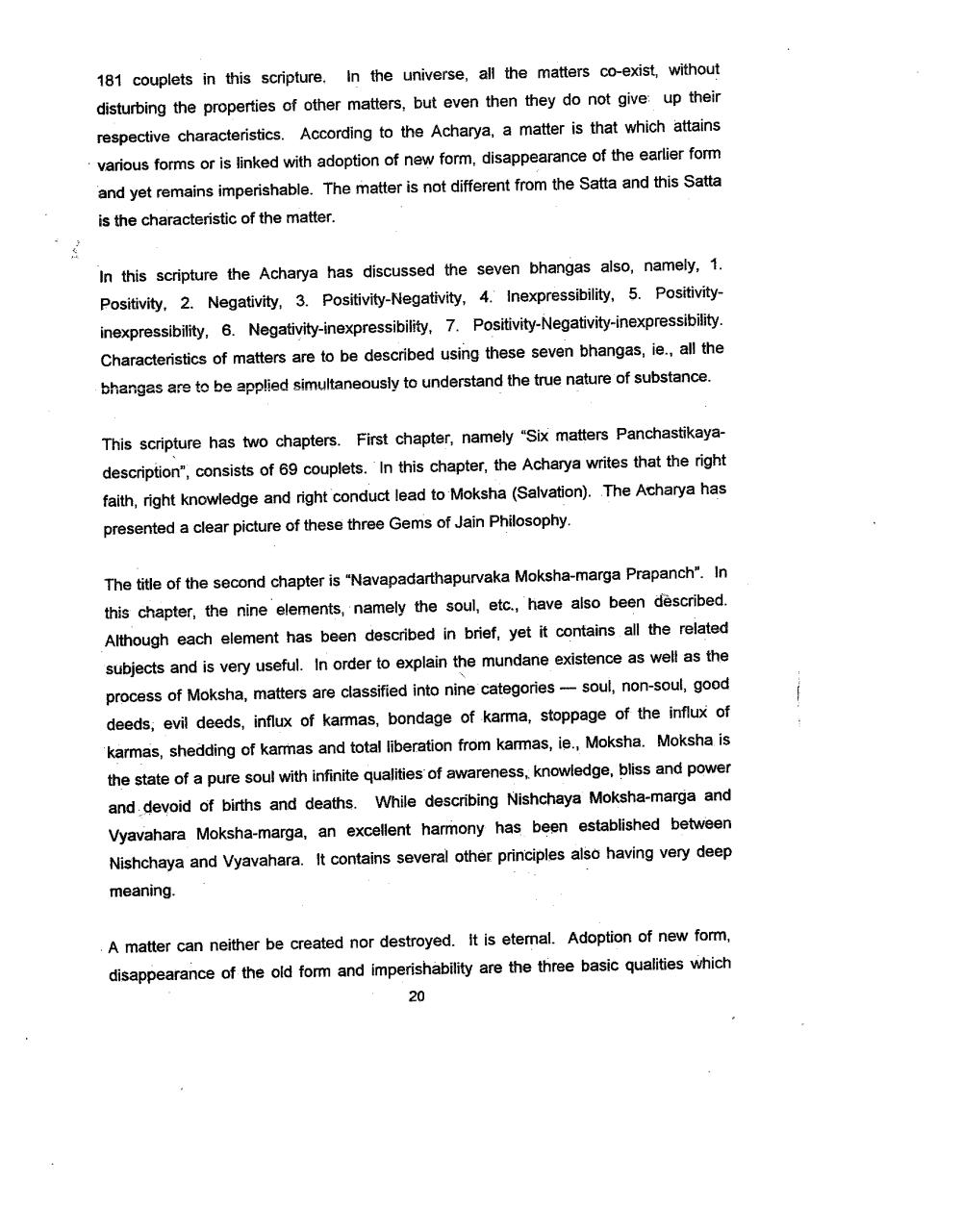________________
181 couplets in this scripture. In the universe, all the matters co-exist, without disturbing the properties of other matters, but even then they do not give up their respective characteristics. According to the Acharya, a matter is that which attains various forms or is linked with adoption of new form, disappearance of the earlier form and yet remains imperishable. The matter is not different from the Satta and this Satta is the characteristic of the matter.
In this scripture the Acharya has discussed the seven bhangas also, namely, 1. Positivity, 2. Negativity, 3. Positivity-Negativity, 4. Inexpressibility, 5. Positivityinexpressibility, 6. Negativity-inexpressibility, 7. Positivity-Negativity-inexpressibility. Characteristics of matters are to be described using these seven bhangas, ie., all the bhangas are to be applied simultaneously to understand the true nature of substance.
This scripture has two chapters. First chapter, namely "Six matters Panchastikayadescription", consists of 69 couplets. In this chapter, the Acharya writes that the right faith, right knowledge and right conduct lead to Moksha (Salvation). The Acharya has presented a clear picture of these three Gems of Jain Philosophy.
The title of the second chapter is "Navapadarthapurvaka Moksha-marga Prapanch". In this chapter, the nine elements, namely the soul, etc., have also been described. Although each element has been described in brief, yet it contains all the related subjects and is very useful. In order to explain the mundane existence as well as the process of Moksha, matters are classified into nine categories - soul, non-soul, good deeds, evil deeds, influx of karmas, bondage of karma, stoppage of the influx of karmas, shedding of karmas and total liberation from karmas, ie., Moksha. Moksha is the state of a pure soul with infinite qualities of awareness, knowledge, bliss and power and devoid of births and deaths. While describing Nishchaya Moksha-marga and Vyavahara Moksha-marga, an excellent harmony has been established between Nishchaya and Vyavahara. It contains several other principles also having very deep meaning
A matter can neither be created nor destroyed. It is eternal. Adoption of new form, disappearance of the old form and imperishability are the three basic qualities which
20




